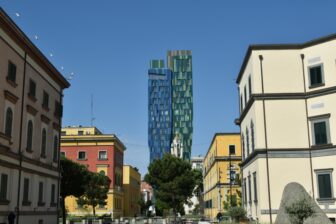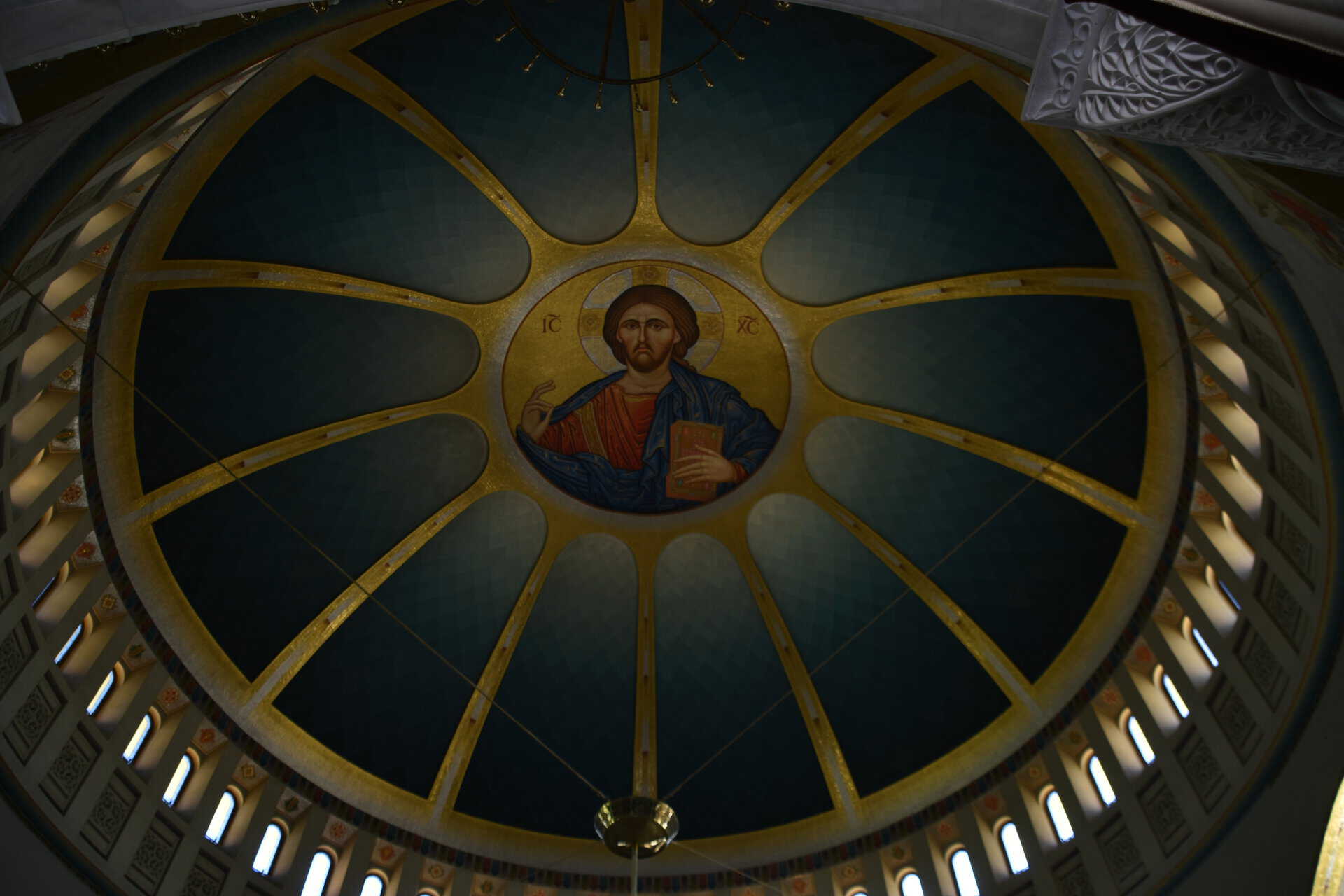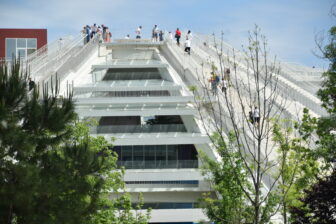
[May 2024] Well, the Albania tour is coming to an end.
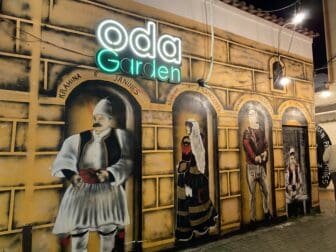
We returned to Tirana, the capital where we started, and on our last night we all ate at an outdoor restaurant called Oda Garden.
It was a restaurant with live music, and it seemed like a tourist orientated restaurant.
After the usual salad, cheese and bean appetizers, the main course was lamb.
However, the portion was small, and it was funny that a woman from Sicily, who was one of the younger people on the tour, was quite angry.
Then, two of our tour companions were not served lamb for a long time, and they said, “If you think we’re going to give up, you’re wrong!” and we all laughed.

When an Italian song was played, the old lady of the obelisk sang along to the music with joy, and it was heart warming to watch.
Overall, I think the tour members were nice people.
Now, the next day was the last sightseeing.
This was supposed to be on the first day of our arrival, but due to flight schedules, about half of the participants couldn’t make it.
This meant a double effort for the guide, but it couldn’t be helped.
First, we went to the area where government offices are located.
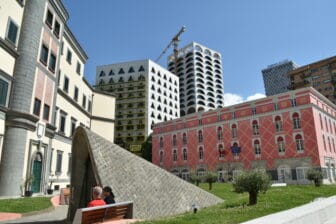
Many of the government buildings were built by Italy during the Fascist era.
One of the buildings was quite flashy pink.
There was a bunker for the government there, which had been turned into a museum.
Apparently there are about 600,000 bunkers in the city.
During the tour, we already saw a few, but this one was for government officials, so it was larger.
There was a jeep-like car parked outside, which was apparently an official car from the communist era.
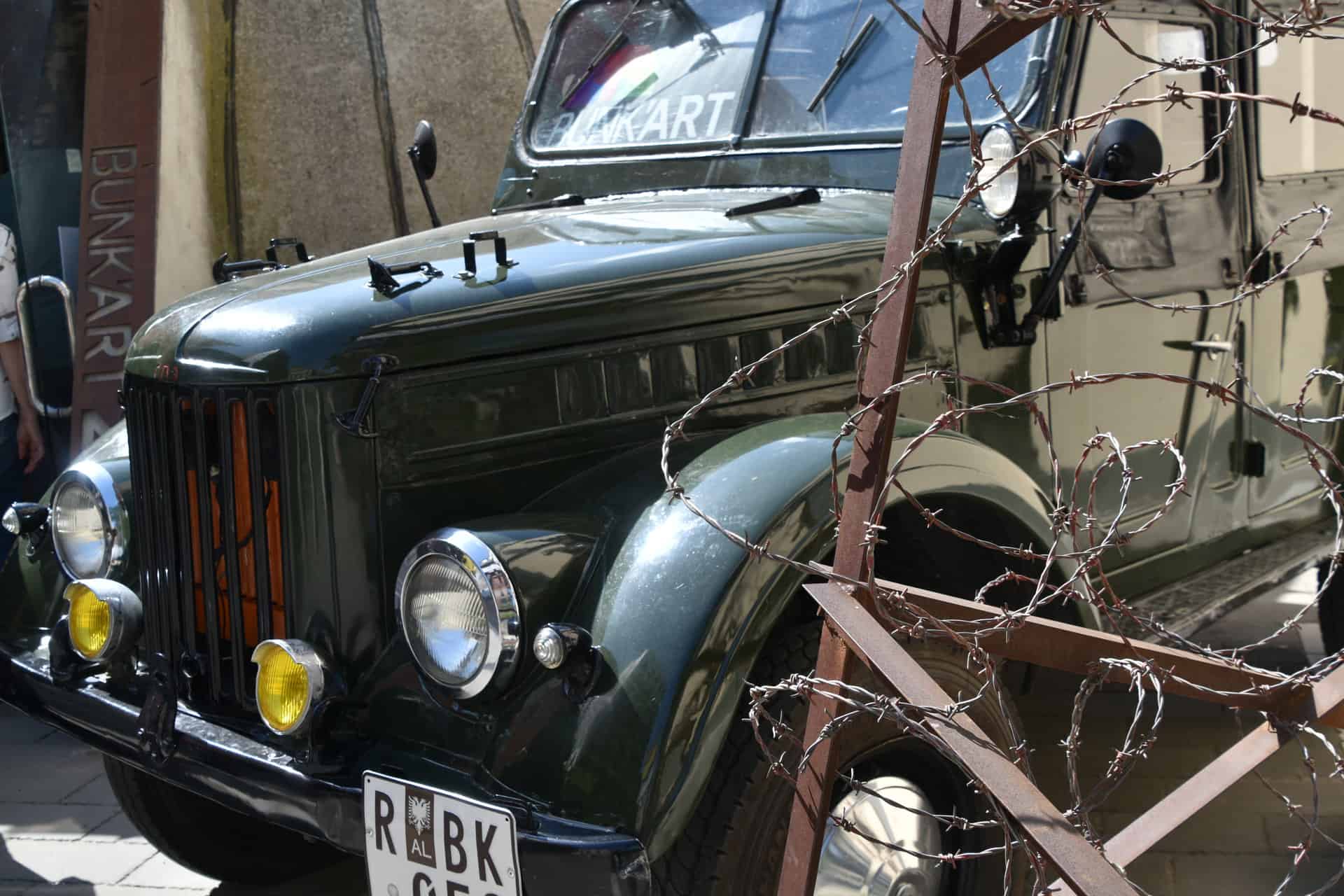
Our guide said, “When this car stopped in front of your house at night, it meant that serious danger was approaching.”
When we entered the museum and looked up, the round ceiling was covered with photos of “disappeared people.”
The number of those people was about 6,000.
Recently, there was a TV program that had interviews with people who were imprisoned in the 80s, and the footage was on the screen.
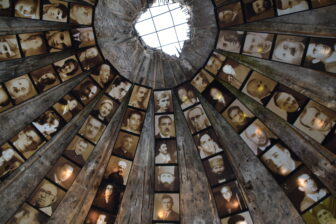
This building was a bunker, not a prison, but perhaps because the underground space with its rows of small rooms on both sides of a narrow corridor reminded us of a prison, it became a museum that showed the horrors of the communist era.
By the way, the bunkers were a playground for our guide, Giorgio, on rainy days.
From what he said, I couldn’t get the impression that life was particularly difficult during that time, but maybe that’s because he was a child then.
We left the museum from a different entrance.

